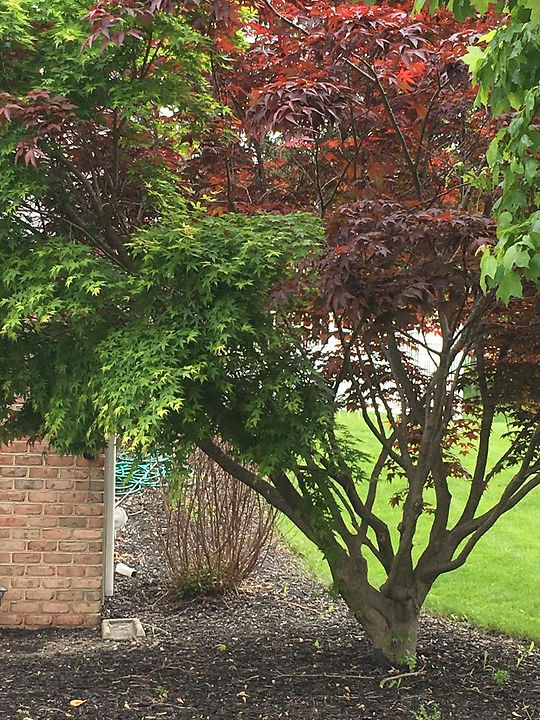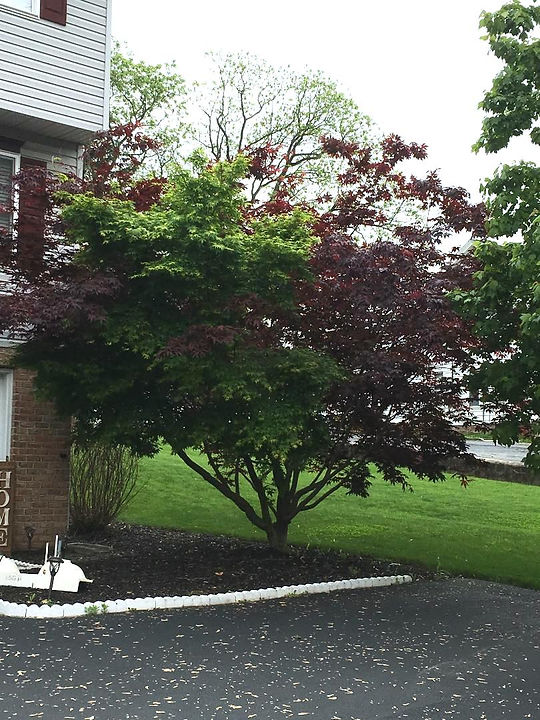
This striking specimen has both green and maroon leaves. The most likely way this came about (see also the entry for Bicolor Dogwood) is as follows:
Horticulturalists often grow red or purple Japanese Maple cultivars by grafting the cultivar branch onto the species’ hardy parent root-stock, the latter of course having green leaves. Occasionally new branches might sprout or sucker up from the root-stock (i.e., below the point of grafting) and produce green rather than red leaves. Meanwhile the grafted cultivar branches produce the expected red leaves. The result, as seen here, is a spectacular bicolor tree.
As gorgeous as this plant is during the summer, it might be even more spectacular in the fall. Green Japanese Maple leaves turn yellow in the fall, while purple leaves turn red. But the tree only changes its colors gradually. Therefore, at just the right time, this plant might have green leaves, yellow leaves, purple leaves and red ones. A four-color tree!
The leaves of this amazing species have been popular snacks in Osaka, Japan for more than a thousand years. Typically the leaves are dipped and fried in tempura butter after being stored in barrels of salt for one year (see last photo).

